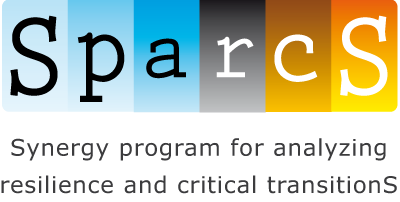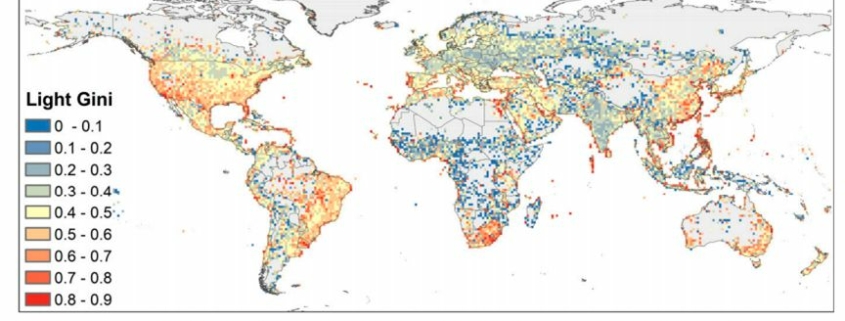Global inequality remotely sensed
Today our paper on remotely sensed inequality appeared in PNAS. In this paper we show how we can use remotely sensed night-time light, to estimate income inequality world-wide.
Global inequality remotely sensed
Mirza, M.U., Xu, C., Bavel, B.v., van Nes, E.H. & Scheffer, M. (2021)
Proceedings of the National Academy of Sciences 118 (18):e1919913118 [Full text]
Significance:
Reliable data on economic inequality are largely limited to North America and Western Europe. As a result, we know the least about areas where inequality presents the most serious developmental policy challenge. We demonstrate that spatial variation in night-light emitted per person can reflect the distribution of income. This allows us to map global patterns and trends in economic inequality using remote sensing.
Abstract:
Economic inequality is notoriously difficult to quantify as reliable data on household incomes are missing for most of the world. Here, we show that a proxy for inequality based on remotely sensed nighttime light data may help fill this gap. Individual households cannot be remotely sensed. However, as households tend to segregate into richer and poorer neighborhoods, the correlation between light emission and economic thriving shown in earlier studies suggests that spatial variance of remotely sensed light per person might carry a signal of economic inequality. To test this hypothesis, we quantified Gini coefficients of the spatial variation in average nighttime light emitted per person. We found a significant relationship between the resulting light-based inequality indicator and existing estimates of net income inequality. This correlation between light-based Gini coefficients and traditional estimates exists not only across countries, but also on a smaller spatial scale comparing the 50 states within the United States. The remotely sensed character makes it possible to produce high-resolution global maps of estimated inequality. The inequality proxy is entirely independent from traditional estimates as it is based on observed light emission rather than self-reported household incomes. Both are imperfect estimates of true inequality. However, their independent nature implies that the light-based proxy could be used to constrain uncertainty in traditional estimates. More importantly, the light-based Gini maps may provide an estimate of inequality where previously no data were available at all. Data on light-based estimates of light-based inequality, and the code used for the analysis and generating figures are available at the public server Zenodo (https://doi.org/10.5281/zenodo.4635734). All study data are included in the article and/or SI Appendix.



